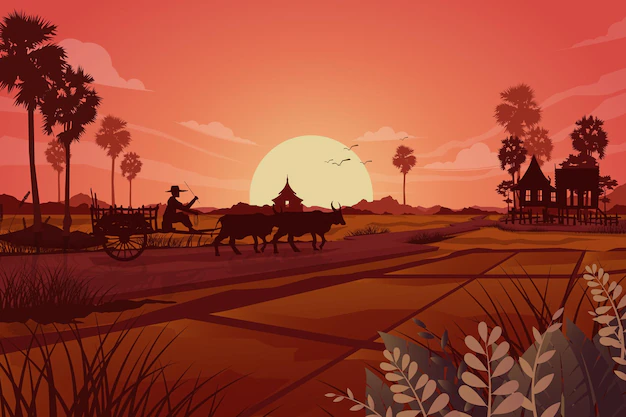Summarize this Article with:
Salvador Dali Biography: Surrealism’s Iconic Visionary

Salvador Dali, a name synonymous with artistic brilliance and eccentricity, stands tall as one of the most iconic figures of the 20th century. Renowned for his groundbreaking contributions to the surrealist movement, Dali’s unique artistic style pushed the boundaries of imagination and challenged the norms of traditional art.
From melting clocks to dreamlike landscapes, his canvases transported viewers into the enigmatic realm of the subconscious. In this comprehensive biography, we delve into the extraordinary life and mesmerizing artistry of Salvador Dali, unraveling the intricate threads that shaped his mesmerizing journey.
Dali’s journey is one that marries reality with the surreal, a dance between the known and the fantastical. His canvases often transcended conventional reality, embracing a visual language that stirred emotions, sparked introspection, and ignited conversations. As we traverse the chapters of his life, we uncover the early inspirations that ignited his creative spark, propelling him towards a lifelong exploration of the extraordinary.
From his captivating works that bore his unmistakable imprint to his groundbreaking techniques that redefined artistic expression, Dali’s impact was profound and far-reaching. His surrealism went beyond the canvas, permeating into every facet of his existence. From his eccentric mustache to his flamboyant personality, Dali embodied his artistry, blurring the lines between creator and creation.
Through the tapestry of Dali’s life, we’ll unearth his evolution from a budding artist to a global sensation. We’ll delve into his collaborations that left an indelible mark on various mediums, and we’ll navigate the controversies that added layers of complexity to his persona.
Join us as we embark on a journey through the life, art, and legacy of Salvador Dali – a man who dared to dream beyond the limits of reality and gave life to the extraordinary within us all.
Personal and Professional Detail
| Category | Details |
| Full Name | Salvador Domingo Felipe Jacinto Dalí i Domènech |
| Date of Birth | 11-May-04 |
| Place of Birth | Figueres, Catalonia, Spain |
| Nationality | Spanish |
| Parents | Salvador Dalí i Cusí and Felipa Domènech Ferrés |
| Spouse | Gala Éluard (Elena Ivanovna Diakonova) |
| Education | Royal Academy of Fine Arts of San Fernando, Madrid |
| Artistic Style | Surrealism |
| Famous Works | “The Persistence of Memory,” “The Elephants,” “The Sacrament of the Last Supper” |
| Innovative Methods | Paranoiac-critical method, exploration of subconscious mind |
| Collaborations | Collaboration with Alfred Hitchcock and other artists |
| Legacy | Iconic surrealist artist, influence on modern art and popular culture |
| Died | 23-Jan-89 |
| Place of Death | Figueres, Catalonia, Spain |
Early Life and Artistic Beginnings
Salvador Dali’s extraordinary journey began on May 11, 1904, in the picturesque town of Figueres, nestled in the heart of Catalonia, Spain. From a young age, Dali exhibited an innate fascination with the world of art, showing an uncanny ability to capture the essence of his surroundings with a stroke of his brush.
Dali’s artistic acumen was nurtured by his parents, particularly his mother, Felipa Domènech Ferres, who recognized his creative potential early on. His mother’s unwavering support allowed young Dali to explore his artistic impulses freely, laying the foundation for his artistic prowess.
At the tender age of 10, Dali received formal artistic education at the Royal Academy of Fine Arts of San Fernando in Madrid. It was during these formative years that Dali’s talents began to blossom, and his exploration of various artistic styles began to take shape. As he studied the works of the old masters and engaged with contemporary artistic movements, he felt a magnetic pull towards the surrealist movement, which would come to define his legacy.
Dali’s foray into surrealism was catalyzed by his encounter with key mentors, including the eminent surrealist artist Joan Miró and the renowned filmmaker Luis Buñuel. Their influence guided him into the world of dreamscapes, distorted realities, and subconscious symbolism – hallmarks of surrealism. This marked a turning point in Dali’s artistic journey, steering him towards the path of innovation and experimentation.
The amalgamation of his family’s encouragement, formal education, and exposure to visionary mentors propelled Dali into the realm of surrealist artistry. With his canvas as a gateway to the unknown, Dali embarked on a lifelong quest to unravel the mysteries of the mind and transcribe them onto his artistic masterpieces. The vivid landscapes of his imagination would soon come to life, capturing the hearts and minds of art enthusiasts around the globe.
Surrealist Movement and Key Works
Salvador Dali’s artistic journey became inseparably intertwined with the surrealist movement, a radical and revolutionary approach to art that aimed to unravel the complexities of the subconscious mind. Dali’s active involvement in the movement was marked by his unapologetic embrace of its principles, making him one of its most prominent and celebrated figures.
At the core of Dali’s surrealism lay a profound exploration of the human psyche. His works sought to transcend the boundaries of reality and delve into the realm of dreams, fantasies, and the inexplicable. Through his art, Dali painted a vivid tapestry of the inner workings of the mind, often blurring the lines between the conscious and the subconscious.
Among Dali’s most iconic works, “The Persistence of Memory” stands as a testament to his mastery of surrealism. The painting features melting clocks draped over surreal landscapes, capturing the fluidity of time and the malleability of reality. The imagery serves as a poignant reminder of the impermanence of existence and the enigmatic nature of time itself.
Another noteworthy masterpiece, “The Elephants,” showcases Dali’s penchant for juxtaposing seemingly disparate elements to create a harmonious yet unsettling composition. In this painting, elongated and spindly-legged elephants carry obelisks on their backs, representing the weight of memories and the burdens of the mind. The symbolism speaks to Dali’s fascination with the subconscious and the intricate interplay between memory and reality.
Dali’s art was characterized by his unique brand of symbolism, often drawing from his own dreams, fears, and obsessions. He utilized distorted forms, unexpected juxtapositions, and hyper-realistic details to challenge the viewer’s perceptions and provoke contemplation. His works encouraged introspection and invited viewers to explore the depths of their own consciousness.
Through his surrealist masterpieces, Salvador Dali redefined the boundaries of artistic expression, crafting a realm where reality and imagination converged. His ability to translate the intangible into tangible art remains a testament to his brilliance as an artist and a philosopher of the mind. Dali’s legacy within the surrealist movement continues to inspire generations, urging them to question the limits of reality and explore the mysteries of the human psyche.
Innovative Techniques and Collaborations
Salvador Dali’s artistic genius extended beyond his surrealist visions; it manifested in his relentless pursuit of innovative techniques that pushed the boundaries of traditional art. One of his most notable contributions was the development of the paranoiac-critical method—a revolutionary approach that allowed him to tap into the hidden recesses of his mind and create astonishingly imaginative artworks.
The paranoiac-critical method involved harnessing the power of paranoia and delusion to interpret and visualize new dimensions of reality. Dali believed that by embracing these irrational thought processes, he could unravel the hidden meanings within his subconscious. This technique led to artworks like “The Sacrament of the Last Supper,” where distorted figures and surreal elements emerge from a fragmented canvas. Through this method, Dali challenged viewers to engage with art on a deeper, psychological level, forcing them to explore the intricate tapestry of their own perceptions.
Dali’s artistic journey was also punctuated by meaningful collaborations with fellow creatives. His interactions with writers like Federico Garcia Lorca and filmmakers like Luis Bunuel resulted in groundbreaking projects that enriched multiple artistic domains. His collaboration with the iconic director Alfred Hitchcock on the dream sequence for the film “Spellbound” further cemented his reputation as an artist unafraid of merging the realms of art and cinema.
In the film, Dali’s surreal imagery takes center stage, creating a dreamscape that blurs the line between reality and the subconscious. His fascination with psychoanalysis and dream interpretation seamlessly melded with Hitchcock’s mastery of suspense, resulting in a sequence that leaves an indelible mark on both film and art history.
Salvador Dali’s legacy lies not only in his individual artistry but also in his capacity to bridge disciplines and explore uncharted creative territories. His innovative techniques and collaborations illuminated new possibilities within the artistic landscape, inspiring future generations to challenge norms, push artistic boundaries, and craft unique narratives that resonate across mediums. Dali’s influence remains a testament to the limitless potential of creative exploration and the enduring power of collaboration.
Controversies and Personal Life
Salvador Dali’s artistic brilliance was matched only by his enigmatic and controversial personal life. While his surrealist masterpieces garnered admiration, his behavior and beliefs often stirred both fascination and criticism. Dali’s penchant for controversy was evident in various aspects of his life, from his political views to his unconventional lifestyle.
One of the most significant controversies revolved around Dali’s relationship with the surrealist movement itself. Despite being a founding member, he was eventually expelled due to irreconcilable differences. His insistence on his unique artistic vision clashed with the movement’s evolving principles, leading to his departure. This departure marked a turning point in Dali’s artistic journey, as he ventured into a realm characterized by eccentricity and individualism.
Dali’s personal life was equally unconventional. His marriage to Gala Dali, a muse and collaborator, became a subject of fascination. While their relationship was marked by devotion, it was also mired in rumors and complexities. Gala’s role in shaping Dali’s artistic endeavors cannot be understated, yet the nuances of their partnership often blurred the lines between muse and manipulator.
Moreover, Dali’s flamboyant personality and self-promotion techniques further added to his mystique. His eccentric public appearances, theatrical clothing choices, and calculated statements were all part of a larger strategy to perpetuate his image as an eccentric genius. These calculated actions, while captivating audiences, also drew criticism from those who believed he was sacrificing authenticity for attention.
In delving into Dali’s controversies and personal life, it becomes evident that his legacy extends beyond the canvas. His complex personality, unapologetic behavior, and willingness to challenge norms made him a polarizing figure. Dali’s ability to evoke strong reactions, whether admiration or skepticism, solidified his position as an artist who defied convention not only in his art but also in his life choices.
Later Years and Legacy
As Salvador Dali entered the later years of his life, the vigor and dynamism that had characterized his earlier years began to wane. Health issues took a toll on the once vibrant artist, and his artistic output underwent a transformation reflective of his changing circumstances.
Dali’s later years were marked by a decline in his physical health, which impacted his ability to create art on the same scale and intensity as before. Despite this, he continued to produce works that showcased his unwavering commitment to pushing artistic boundaries. The themes of mortality and existential contemplation that had always lurked beneath his surrealist visions became more pronounced, as if grappling with his own mortality had become an intrinsic part of his art.
While his health declined, Dali’s influence on modern art remained steadfast. His innovative techniques, unconventional ideas, and distinctive style had left an indelible mark on the art world. The legacy of surrealism, in which Dali played a pivotal role, continued to inspire artists and creators to explore the realm of dreams, subconscious, and unconventional realities.
Dali’s lasting impact extended beyond the art world, permeating pop culture and influencing various artistic mediums. His imagery became iconic, recognized even by those who might not be well-versed in art history. From album covers to advertisements, Dali’s surreal aesthetic found its way into the fabric of popular imagery.
In reflecting on Dali’s legacy, one cannot ignore his role in transforming art into a realm of limitless possibilities. His ability to turn imagination into tangible creations, his audacious exploration of the subconscious, and his defiance of artistic norms have left an enduring legacy. Salvador Dali’s journey from a young artist in Spain to a globally recognized surrealist icon remains a testament to the power of embracing individuality, pushing boundaries, and reshaping the very essence of art itself.
Conclusion
Salvador Dali’s artistic journey has left an indelible mark on the canvas of modern art, painting a surreal landscape that continues to intrigue and inspire. From his early days in Figueres, Spain, to his emergence as a luminary of the surrealist movement, Dali’s contribution to the world of art remains unparalleled.
Dali’s legacy is characterized by his audacious exploration of the subconscious, his mastery of symbolism, and his innovative techniques that shattered conventional artistic norms. His iconic works, like “The Persistence of Memory” and “The Elephants,” stand as testaments to his ability to challenge reality and immerse audiences in a dreamlike realm.
Beyond his artistic prowess, Dali’s persona was as enigmatic as his creations. His controversies, complex personality, and collaboration with figures like Alfred Hitchcock added layers of intrigue to his legacy. Yet, at the heart of it all, Dali’s dedication to self-expression and his unwavering belief in the power of imagination set him apart as an artistic visionary.
As we contemplate Salvador Dali’s legacy, we are reminded that his influence goes beyond the canvas; it has permeated culture, fashion, and the very essence of creative thought. His work continues to resonate with those who seek to explore the boundaries of reality and challenge the norm. Dali’s surrealist journey invites us to journey through the labyrinth of the mind, daring us to see the world in new, unconventional ways.
In the pantheon of art history, Salvador Dali remains a luminary whose legacy illuminates the limitless possibilities of human imagination. His art is a reflection of the wondrous and mysterious facets of life, inviting us to embark on a voyage where reality and dreams intertwine. Through his creations, Dali beckons us to step into the surreal and explore the profound depths of human creativity and expression.
Hey kids, how much did you like Salvador Dali Biography: Surrealism’s Iconic Visionary? Please share your view in the comment box. Also, please share this story with your friends on social media so they can also enjoy it, and for more such biography, please bookmark storiespub.com.
Suggested Biography –
Salvador Dali FAQs
Who was Salvador Dali?
Salvador Dali was a renowned Spanish artist known for his surreal and imaginative artworks. He was a leading figure in the surrealist movement and is celebrated for his unique style and creative vision.
What is Salvador Dali famous for?
Salvador Dali is famous for his surreal and dreamlike paintings that often defied conventional reality. His iconic works include "The Persistence of Memory" and "The Elephants," which showcase his mastery of symbolism and innovative artistic techniques.
What is the significance of "The Persistence of Memory" painting?
"The Persistence of Memory" is one of Salvador Dali's most famous paintings, depicting melting clocks in a dreamlike landscape. It's often interpreted as a representation of the fluidity of time and the subconscious mind.
Did Salvador Dali work in other mediums besides painting?
Yes, Salvador Dali was a versatile artist who worked in various mediums, including sculpture, film, photography, and even fashion. His creativity extended beyond traditional canvas art.
What is Dali's paranoiac-critical method?
Dali's paranoiac-critical method was an artistic technique he developed to tap into his subconscious mind. It involved embracing paranoia and irrationality to create unique and unexpected images.
What controversies surrounded Salvador Dali?
Salvador Dali was often associated with eccentric behavior and controversies. His tumultuous personal life, including his relationships and political views, added to his mystique and public image.
How did Salvador Dali influence modern art?
Dali's influence on modern art is profound. His surrealism challenged artistic norms, paving the way for experimentation and abstract expression. His work has inspired generations of artists to think outside the box.
What is Dali's legacy in popular culture?
Dali's legacy transcends art and has left an impact on popular culture. His iconic mustache, distinctive fashion sense, and surrealistic ideas continue to influence fashion, film, music, and advertising.
Where can I see Salvador Dali's artworks?
Many of Salvador Dali's artworks are displayed in museums and galleries around the world. The Salvador Dali Museum in Figueres, Spain, is dedicated to his work and houses a significant collection of his creations.
What is the lasting impact of Salvador Dali's art?
Salvador Dali's art continues to captivate audiences and challenge perceptions. His ability to merge reality and imagination has left an enduring impact on the art world, inspiring artists and art enthusiasts to embrace creativity without boundaries.
















